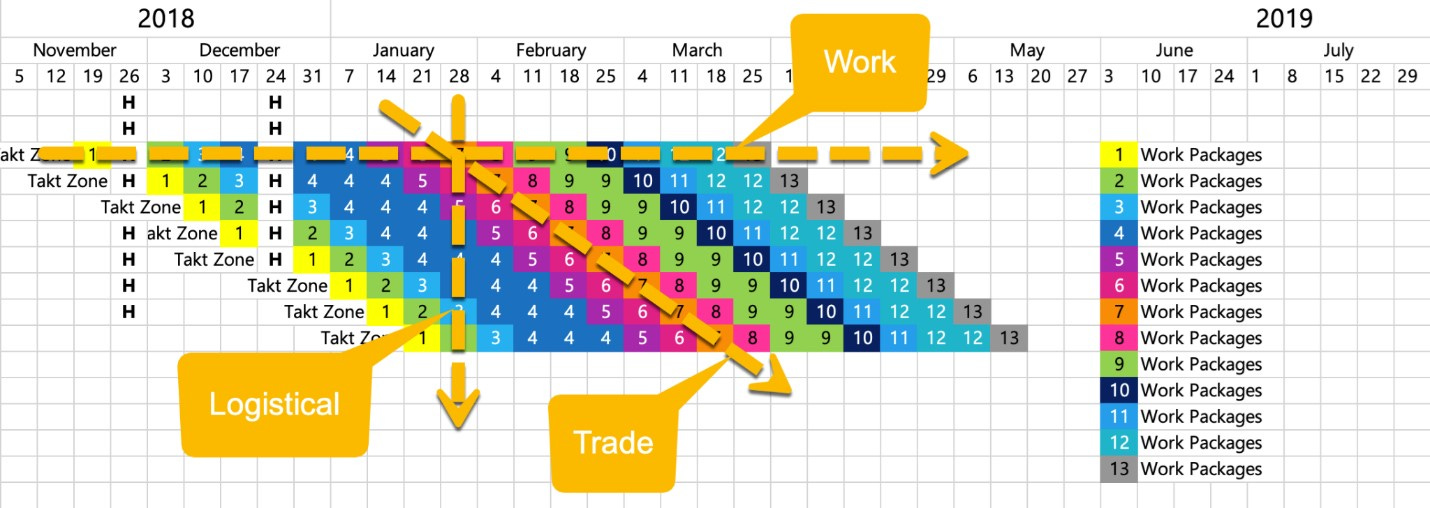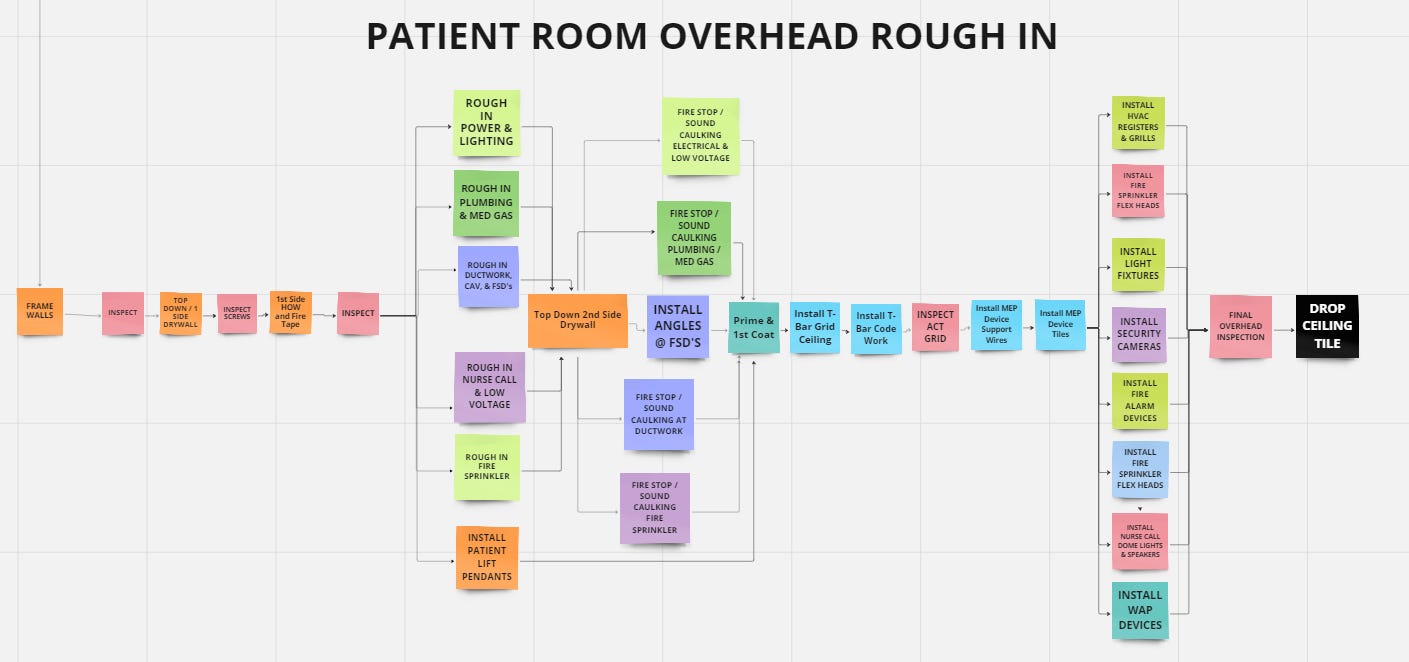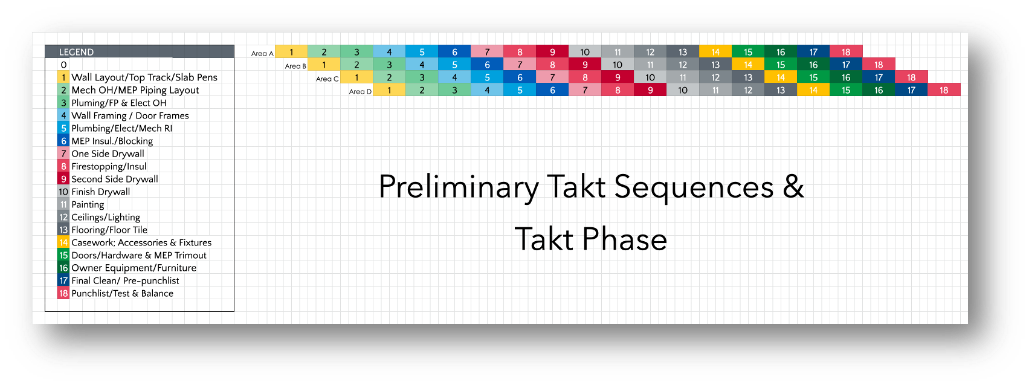👋 Hey, Kyle here! Welcome to The Influential Project Manager, a weekly newsletter covering the essentials of successful project leadership.
Today’s Overview:
Construction projects rely on useful schedules, but sticking to timelines remains a consistent challenge.
Traditional methods like CPM, while popular, often result in unrealistic plans, causing projects to miss deadlines and go over budget.
How can construction managers improve their approach to reliably complete projects on time and within budget?
Takt Planning & Control provides a streamlined, one-page plan focusing on workflow efficiency, addressing the limitations of traditional methods and paving the way for more successful project outcomes.
Today’s Newsletter is Proudly Presented by Sablono - Progress Reporting Made Simple!
Say hello to Sablono Track Free - your revolutionary, real-time construction tracker. It’s like a command center in your pocket, syncing you directly to your site….and guess what? It's 100% free!
Sablono delivers a complete, organized overview of every project detail. Effortlessly upload documents, photos, and notes, boosting your team's productivity and ensuring smooth collaboration with subcontractors.
Whether it's laying down foundations or the final touches of fit-out, Sablono Track Free makes tracking progress a breeze. It's not just an app, it's your ticket to a smoother, smarter, and stress-free project management. Jump on Sablono Track Free now and lead your projects like a pro!
A Beginner’s Guide to Takt Planning & Control
Filed under: Lean Tools & Tactics
As most of you know, a successful construction project thrives on excellent planning and project management. The foundation of this process is the construction schedule, a tool we all depend on to align tasks and timelines.
But let's face it, despite our best efforts, only a small fraction of projects hit their schedule and budget targets. It's a concerning trend, hinting at a deeper issue in how we plan and execute projects.
Traditionally, the Critical-Path Method (“CPM”) has been our staple for organizing project demands – detailing who does what, where, and when. But CPM often proves too rigid, failing to capture the interplay of a project's operational system.
A real plan is more than a schedule. The only thing that a schedule shows you is what activities you plan to do and when. A plan spells out every detail, from resources to tiny operational steps. It's shared with everyone involved, so they know and support it.
The inflexibility and lack of transparency in CPM schedules are why many projects face delays and quality issues. We've been busy managing what's already happened, instead of steering the production toward success. It's time for a change.
Here's where Takt Planning & Control comes in. Rooted in operations science and lean construction principles, this method transforms scheduling into a straightforward, one-page plan that genuinely captures the workflow.
This guide is your introduction to Takt Planning, a method I've come to trust. It's designed to provide you with the core knowledge needed to improve your approach to planning and executing.
While there are more in-depth resources out there, this guide distills my extensive research into the tools you need get started. Let's begin this journey to making your schedules more stable and predictable.
What is Takt and Where Did it Come From?
The term 'Takt' comes from German manufacturing and means "Rhythm," "Cadence," or "Beat." It's a way of planning your construction project like an efficient assembly line in a factory.
Think of Takt planning as a one-page schedule that focuses on three things:
Throughput: Measuring the amount of work achievable within a specific time frame.
Bottlenecks: Identifying and addressing areas where work progress might slow down or halt (roadblocks).
Preserving “Flow”: Creating a smooth hand-off between trades (workflow), seamless movement across different work zones (trade flow), and an efficient order of operations (logistical flow).
Takt planning is inspired by successful strategies used in manufacturing. It's part of a shift in construction towards more advanced techniques, like using prefabrication (building parts off-site), applying operations science, and production management.
Just like in a factory assembly line, Takt planning helps your team move through the construction site in a well-planned, smooth way. It's about keeping a steady and uninterrupted work pace.
Takt planning helps you avoid rushing (which can lead to burnout and mistakes) and being too slow (which can delay the project). Picture running a marathon at a steady pace instead of sprinting and fatiguing half way through.
In simple terms, Takt planning is about bringing the efficiency of factory production to your construction site, helping you manage the work rhythm, continuity, and consistency to keep the project schedule on track.
Traditional CPM Scheduling: Strengths & Challenges
CPM (Critical Path Method) scheduling has been a cornerstone in managing large and complex construction projects. It's important to recognize the benefits it brings to the table.
Here are some strengths of CPM:
Effective Progress Tracking: Keeps tabs on project progress and milestones.
Dependency Management: Handles complex networks of interdependent tasks.
Change Management: Facilitates thorough analysis and management of changes.
Critical Path Identification: Pinpoints the most crucial tasks affecting project duration.
Comprehensive Activity Organization: Structures and organizes the full range of project activities.
Mathematical Precision: Calculates dates and durations with mathematical accuracy.
Resource Management: Aids in planning and controlling resource allocation and usage.
However, despite its significant contributions, CPM scheduling also has inherent weaknesses. These issues come from both the tools and methods employed in CPM.
Here are some of the key challenges that CPM faces:
Difficulty in Problem Detection: Issues can be hard to spot and easy to overlook.
Pushing Limits: Often leads to unrealistic expectations, causing constant strain and burnout.
Complex Duration and Relationships: Adds layers of complexity with erratic durations and convoluted relationships.
Resource Inefficiencies: Changing resource needs can lead to inefficiency.
Focus on Early Completion: The emphasis on early deadlines results in consistent delays.
Even though CPM scheduling has paved the way for construction management, understanding its limitations is a must. This awareness allows us to explore and integrate better methods, like Takt planning, to address these challenges.
How Takt Scheduling Helps:
Takt scheduling is a complement to CPM, addressing its earlier mentioned shortcomings, not as a replacement but to hold it accountable. It takes the structured approach of CPM and refines it, giving you a much more stable and predictable schedule.
Here's how Takt scheduling improves upon CPM:
Structured Flexibility: Takt planning divides work into balanced zones and activities, adding flexibility to CPM's structure.
Clear and Simple: It simplifies complex plans into a single-page format that's easy to understand.
Big-Picture Efficiency: Focuses on overall project throughput, avoiding narrow focus on individual task efficiencies.
Work-in-Process (“WIP”) Control: Encourages completing tasks in sequence, preventing incomplete work from piling up.
Prevents Overproduction: Aligns trade work to ensure that finishing one task early doesn't disrupt the overall project flow.
Resource Balancing: Levels resource use, improving efficiency and addressing CPM's resource allocation issues.
Easier Plan Verification: Simplifies the process of verifying plan accuracy and logic.
Consistent Work Rhythm: Establishes a steady workflow, improving trade coordination and efficiency.
Improves Problem Detection: Its uniform structure makes it easier to spot and solve issues, unlike CPM's more complex format.
How to Create Your Takt Plan (Step-by-Step)
“Flow where you can. Pull where you can’t.”
Creating a Takt Plan might sound complex, but it's quite manageable, especially if you're familiar with traditional construction methods.
Here's a beginner-friendly guide with quick definitions to help you get started:
1) Research Your Drawings
Study your project’s general notes, floor plans, typical details, and diagrams.
Visualize the project in 3D to understand its scope fully.
2) Determine Takt Zones, Logistics, and Sequence
Takt Zones: These are specific areas of your project where work will take place.
Flow Direction: Decide how work will move across the site.
Logistics: Think about where materials will come in and how they move around.
MEP Infrastructure: Prioritize areas for Mechanical, Electrical, and Plumbing work.
Equalize Zones: Balance the workload across different areas, focusing on effort needed, not just size.
3) Build the Sequence
Last Planner System: This is a collaborative planning process where those doing the work help plan it.
Plan Details: List tasks, how long they'll take, and crew sizes, then put them in a logical order.
4) Create the Takt Sequence & Work Packaging
Natural Cadence: Find a steady work rhythm for the tasks.
Takt Wagons: These are groups of tasks bundled together, moving through the project like a train.
Sequence Legend: A key or guide to your plan.
Leveling Production: Adjust things like crew sizes, work processes, or work zones to make the workload steady.
5) Map Out the Takt Train
Stagger Sequences: Plan how each task group (Takt wagon) follows the other.
Zone Indicators: Label each task group with its work area for clarity.
6) Optimize the System
Use Little’s Law for simulating ideal throughput: (TW + TS - 1) x TT = Duration.
Little’s Law: A formula used to predict how long tasks will take.
Rezoning: Adjust work areas if it makes the project more efficient.
7) Add Buffers
Buffers: These are extra time or resources set aside to handle unexpected delays.
Parametric Calculations: Math to help plan your schedule more accurately.
8) Link All Takt Trains Together
Takt Phases: Different stages of your project.
Interdependence Ties: Connection them between different tasks or phases.
Time Scale Alignment: Make sure everything fits within your project's start and end dates.
Final Takeaways & Next Steps
We’ve seen how construction projects struggle to meet deadlines.
It's easy to think that adding more people or working longer hours is the solution. But that is a great way to ruin a late project. It just complicates and slows down the process.
Takt Planning shifts the focus from working harder to working smarter. Its beauty lies in its simplicity, condensing complex plans into a clear, one-page overview. This clarity not only helps in identifying and solving problems quickly but also improves decision-making.
Ready to master Takt Planning? I highly recommend checking out the "Takt Planning & Control Introduction" online course by Spencer Easton.
It's ideal for both beginners and seasoned pros, providing in-depth insights and hands-on Takt Planning techniques so you can start implementing right away.
Special Offer: As an Influential PM subscriber, enjoy 30% off with code: “Influentialpmtakt”.
Course Highlights:
Introduction: The basics of Takt Planning.
Why Takt in Construction: The advantages and impact.
Principles of Takt: Key concepts and effectiveness.
Applying Takt: Step-by-step implementation guidance (template included).
90 Day Challenge: Real-world application and skill testing.
This course kick-started my journey in Takt Planning. Enroll now and transform your approach to project management. Efficient, effective projects await!
Looking forward to seeing you in the course!
Until next week,
Kyle Nitchen
When you're ready, here’s how I can help:
Upgrade your PM software. Experience the future operating system for construction and real estate development.
Get my full toolbox (free). Access 30+ software and hardware tools I'm using today.
Master scheduling. Elevate your skills as a scheduler, planner, and lean builder with the Takt Planning & Control online course. Use code "Influentialpmtakt" for 30% off.
Advertise in this newsletter. Put your brand in front of 3,300+ construction project managers, leaders, and execs. (Booked out 5 weeks)
Support this newsletter. If you find value in The Influential Project Manager articles, consider becoming a paid subscriber. Your support helps keep this work free for all.












